Combating Racism – Eradicating Hate – Part 1
“Not everything that is faced can be changed.
But nothing can be changed until it is faced.”
~ James Baldwin
My original plan for last week’s newsletter, and then this week’s newsletter, was to focus on health disparities in our country and particularly the ways Black Americans have been inequitably impacted by the coronavirus.
But the attempted coup on the U.S. Capitol on January 6, 2021 has left me unable to think about much else. As more reports are issued, the degree of hate fomented by the insurrectionists and some of our elected officials becomes more frightening every day. My pollyanna-ish world view, which was belatedly shattered after the murder of George Floyd, has now been completely obliterated as I have watched the news reports and become aware, in a new way, of the level of hate in this country. And to those who have been victimized by hate during my lifetime, I apologize for not standing up sooner.
A young white man opens fire and kills nine Blacks who welcomed him into Bible study at the Mother Emanuel AME Church in Charleston, South Carolina, telling his victims, “I have to do it.….you are taking over our country. And you have to go.” And the murderer is escorted away by police officers as if he were being stopped for a traffic violation. A swastika and other anti-Semitic graffiti appear at an elementary school in Stapleton, Colorado. A gunman carrying an assault rifle and a handgun storms a well-known gay club in Orlando, Florida killing 49 people and wounding 53 others. During the “Unite the Right” rally in Charlottesville, Virginia, in which one woman was killed and many others were injured, many chanted racist, Nazi-associated phrases and violently clashed with counter-protesters. Two days later, the president infamously equated the white supremacists with counter-protesters, saying there were “very fine people on both sides.”
President-elect Biden invoked the president’s “very fine people” remarks in his announcement as a presidential candidate.
“With those words, the president of the United States assigned a moral equivalence between those spreading hate and those with the courage to stand against it. And in that moment, I knew the threat to this nation was unlike any I had ever seen in my lifetime.”
And since January 6th, I also recognize the threat in a transformed way. I only hope that “better late” will be better than never.
Hatred in America has come to define who we are.
But racism and hate did not start with these recent events. In past newsletters I have written extensively about riots and protests against Black Americans throughout our nation’s history. According to an article in The New Yorker entitled “Living in the Age of the White Mob”, “For most of the hundred and fifty-six years since the Civil War, white mobs have had free rein over American society. They burned Black schools during Recontruction, strung Black bodies from trees during the lynching era, and harassed Black students during the civil-rights movement.”
Being part of a white mob has rarely been a crime. After committing acts of terror, many members of the white elite – doctors, judges, police commissioners – predominantly men, have gone about their lives without repurcussions.
White mob lawlessness, historically used against Black communities, has now morphed into our overall democratic society. The Greenwood Black newspaper, The Tulsa Star issued this warning in 1915, six years before the horrific Tulsa massacre: “Mob law is dangerous and will undermine the foundations of any government that permits it. Unless this monster is subdued in this country, serious trouble is sure to follow.”
~ ~ ~ ~ ~ ~ ~ ~ ~ ~ ~ ~ ~ ~ ~ ~ ~ ~ ~ ~ ~ ~ ~ ~ ~ ~ ~ ~ ~ ~
Last week’s riot/insurrection on the steps of the U.S. Capitol, while new in its geography, is not a new phenomenon in America. We can look back at just a few of the hate-filled actions of White rioters against Blacks across our history:
1866 – New Orleans, Louisiana
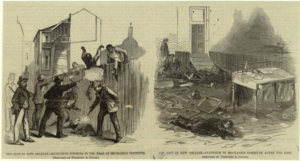
A peaceful demonstration of Black Freedmen, gathered inside the Mechanics Institute, erupted into a full-blown massacre with an estimated 40-50 Blacks dead and more than 150 wounded.
1919 – Chicago, Illinois
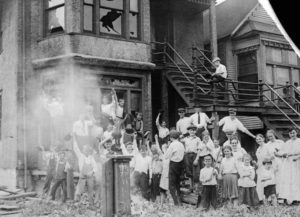
White children outside the Black family’s house they had set on fire during the Chicago race riot. Credit…Getty Images
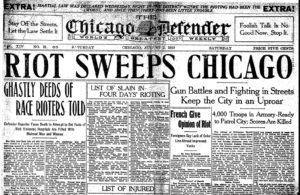
White mobs leave 38 Blacks killed and 500 injured.
1921 – Tulsa, Oklahoma
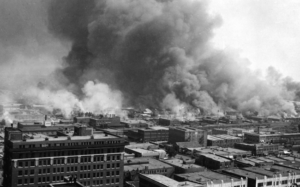
During the riot in the Greenwood section of Tulsa, in which the death toll is estimated between 50 and 300 and in which 1,256 houses were burned, along with a school, library, hospital, churches, stores and Black-owned businesses, rioters took pictures in front of the burning buildings and created postcards to show the carnage. If cell phones, selfie-sticks and Facebook had existed then, mob members would have broadcast the insurrection in real time.
1935 – Hernando, Mississippi
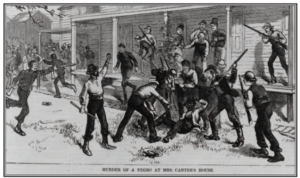
Formerly enslaved people were beaten and murdered for asserting they were free after the Civil War. Without federal troops, freed Black men and women remained subject to violence and intimidation for any act or gesture that showed independence or freedom. (Library of Congress.)
~ ~ ~ ~ ~ ~ ~ ~ ~ ~ ~ ~ ~ ~ ~ ~ ~ ~ ~ ~ ~ ~ ~ ~ ~ ~ ~ ~ ~ ~
And this is what hate looked like at the U.S. Capitol on January 6, 2021:



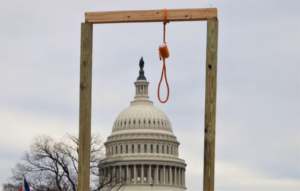
THE ANATOMY OF HATE
According to an article entitled “Why We Hate” in the Emotion Review, “hatred is the “most destructive affective phenomenon in the history of human nature.” The author’s note:
- Hate can be triggered in reaction to a specific event, but it often occurs as a long-term emotion, generalizing from a single event to a group or person.
- Hatred is an emotion that requires more time to evolve, but once it happens it takes much longer to dissolve, and it will always leave scars.
- Haters perceive little room for constructive change and therefore, to them, there seem only radical options left to act upon their hate.
- Feelings of powerlessness and fear of loss of power are considered characteristic conditions in the development of hate.
- Trying to cope with changes or perceived disturbances of one’s traditional values and way of life can lead to trying to protect oneself and one’s group to defend ones’ way of life, safety, health and values.
- Blaming others helps to fulfill the needs to protect and defend one’s way of life and values in times of chaos and uncertainty. This leads to hate towards groups in society that are seen as the cause of all problems.
- The goal of hate is not merely to hurt, but to ultimately eliminate or destroy the target, either mentally (by humiliating), socially (by excluding or ignoring), or physically (torturing, killing), which may be accompanied by the goal of letting the supposed wrongdoer suffer.
- The hatred of groups does not require a personal connection with any members of the group.
- Hate is based on attributing an action to the basic traits and features of a person. Generalizing these characteristics to members of a group further enables a justification of one’s hate.
A lack of direct interaction amplifies hate because the negative appraisal of the group is never reappraised or contradicted by other information. This doesn’t necessarily mean that social interactions with hated group members automatically reduce hate. However, under the right circumstances, haters may learn more about the motives and circumstances of the hated group’s actions, which could result in some perspective taking. [See “Why I, as a Black man, attend KKK rallies,” TED talk by Daryl Davis.]
HOW HATE SPREADS
Feelings of victimhood or fear generate a need to share one’s feelings with like-minded others. Knowing that others feel similarly about the target of hate reinforces the experience and expression of one’s own emotions. Sharing strong negative emotions can strengthen feelings of collective victimhood that can make the original feeling of hate even more intense and enduring.
The rise of the internet and the use of social media have been crucial in spreading hate, because hate messages now have an immediate worldwide audience. Hate groups that support neo-Nazism, racism, sexism or homophobia use virtually the same tools as any mainstream advertiser to spread their insidious messages online.
In previous centuries, newspapers and flyers were used to gather protesters and rioters. But with today’s speed of the internet, groups can amass within hours. Hate groups have transformed parts of the internet into a propaganda battlefield, sometimes with deadly consequences. For example, 2015’s Charleston massacre in the Mother Emanuel AME Church, and 2017’s violent, racially-charged rally and protest in Charlottesville, Virginia, were linked to online activities.
Today, the number of organized hate groups and hate-advocating sites has increased and so has the exposure of potential victims to hate messages. These groups are growing in numbers. According to a report released this year by the Southern Poverty Law Center, the number of U.S. hate groups has increased 20% since 2014. A recent study found that 53% of Americans were exposed to hateful message in the three months between August – October 2018.
Hate speech laws are almost nonexistent in the U.S. The absence of punishment increases hate and hate crimes because it signals that the victim and even the whole group to which the victim belongs deserves its fate. In other words, the absence of punishment emphasizes the justification of the hatred.
Here are five basic ways hate groups are currently using the internet to get their messages out and stir up violence.
1. Social networking
Mainstream social networking outlets such as Twitter and Facebook have struggled with how to handle hate groups on their platforms. These sites often find themselves trying to balance the right to share and debate ideas with the responsibility to protect society against potential attacks.
In late 2017, people used web platforms including bulletin board sites Reddit and 4chan to post the false conspiracy theory that top Democrats including Hillary Clinton ran a child sex operation out of a D.C. pizzeria. Pizzeria owner James Alefantis received death threats. Eventually a man with an assault rifle showed up at the pizzeria and fired a shot before he was apprehended. No one was hurt.
Although tech companies feel increasing pressure to police speech on their platforms, if they over-correct or ban speech too broadly, they risk violating the right of all Americans to freedom of speech.
2. Video platforms
Countless messages of hate are posted worldwide on various video platforms. In June, 2017, YouTube and its owner, Google, promised to do more to identify and remove hateful content.
However, in April, 2018 a CNN investigation found that ads from more than 300 companies and organizations – including tech giants, major retailers, newspapers, and government agencies – ran on YouTube channels promoting white nationalists, Nazis, pedophilia, and conspiracy theories.
3. Online funding
Without the convenience of the internet to raise funds, many hate groups would be crippled.
The Southern Poverty Law Center, a nonprofit that monitors hate groups in the U.S., said organizers, speakers and individuals attending the Charlottesville rally used PayPal to move money ahead of the event.
Popular crowdfunding site GoFundMe also took a stand against hate speech following Charlottesville. The platform shut down multiple campaigns to raise money for James Fields, the man accused of driving his car into a crowd at the rally, killing one woman and injuring dozens more.
Some hate groups get around traditional funding sites by using alt-right-focused fundraising platforms and cryptocurrency. Cryptocurrency a relatively new kind of currency for the digital era. It works across international borders and doesn’t need to be backed by banks or governments.
4. Websites/Webhosting
Websites are a basic piece of the hate propaganda machine. Webhosting companies GoDaddy and Google Domains cancelled the white supremacist site, The Daily Stormer, after the Charlottesville protest.
But getting kicked off a web host merely forces a site to go somewhere else — ultimately prompting a game of internet domain whack-a-mole. It also raises issues around what domain-hosting companies are responsible for, and where they draw the line on objectionable material.
Legally, webhosting companies don’t have responsibility around this, unless it’s a federal crime (such as child pornography) or intellectual property. Tech platforms are protected under the Communications Decency Act, a unique U.S. legal protection that gives a broad layer of immunity to online companies from liability for content posted by users. There are exceptions, but the law is meant to preserve freedom of expression. Companies are expected to act in good faith to protect users.
5. The Dark Web
The dark web is a part of the internet that can’t be searched by Google or most common search engines. It can only be viewed with a special Tor browser.
After being banned by GoDaddy, Google Domains, and a Russian hosting outfit, The Daily Stormer was forced onto the dark web, where it couldn’t be accessed through standard web browsers. Later the site was able to find a legitimate host and return to the internet.
Hate groups may find less policing on the dark web, but because relatively few people use the dark web, the potential audience is very small.
~ ~ ~ ~ ~ ~ ~ ~ ~ ~ ~ ~ ~ ~ ~ ~ ~ ~ ~ ~ ~ ~ ~ ~ ~ ~ ~ ~ ~ ~
If you are like me, sickened with grief at the insurrection at the U.S. Capitol, you may be also wondering, as I am, “How did we get to this point in our country?” And I have agonized trying to find the answer.
Now I realize that the reality was too painful to see. We got here by keeping our eyes closed to what was right in front of us, by thinking there was nothing we could do about racism or white supremacists, or by hiding the reality away in the back of our minds like we hide old relics of by-gone days in the back corner of a dusty attic. We discounted the statement of Christopher Wrays, then head of the FBI, who spoke to Congress on September 17th: “White supremacists are the biggest domestic terrorism threat . . . we should be prepared . . .”
This is not the time to be passive. It is time to become part of a movement against hate. In next week’s newsletter, barring unforeseen circumstances, I will provide ways that each of us can help eradicate hate. In the meantime, I urge you to add “make a commitment to human rights” to your list of goals for 2021. Maybe this moment in history will be the catalyst for long lasting and overdue change.
~ ~ ~ ~ ~ ~ ~ ~ ~ ~ ~ ~ ~ ~ ~ ~ ~ ~ ~ ~ ~ ~ ~ ~ ~ ~ ~ ~ ~ ~
Primary sources that informed my thinking for this newsletter are:
“Ten Ways to Fight Hate – A Community Resource Guide,” published by the Southern Poverty Law Center, August 2017.
“Why We Hate” in Emotion Review, Agneta Fischer, Eran Halperin, Daphna Canetti, and Alba Jasini, August 2, 2018.
“Living in the Age of the White Mob,” in The New Yorker, Victor Luckerson, January 15, 2021.